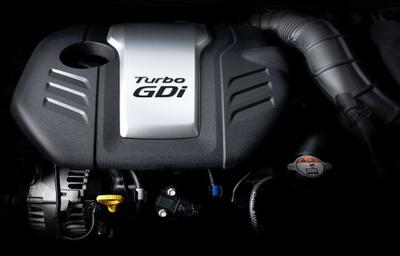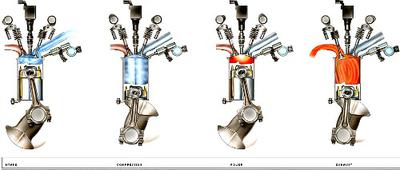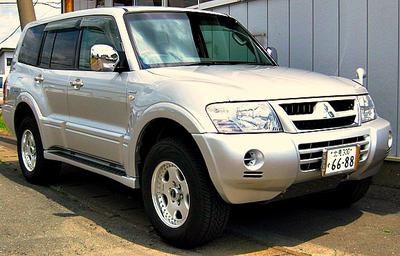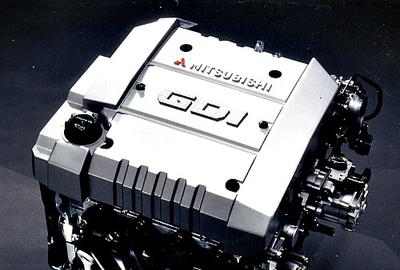VANILLA BEANS | SOYBEAN OIL | SOYMEAL & CAKE | COCOA BEANS | COFFEE BEANS
Gasoline Direct Injection (GDi) in Uganda

GDI Engine in Uganda
Hallo every one. This is the Africa Uganda Auto guide again. Today in our series of engines, we are going to look the GDI or the Gasoline Direct Injection.
Now if you have been very observant, you have definitely come across cars on Ugandan streets with a label GDI and that’s what we are going to talk about today in this article.
So, What is GDI Car Engine?
First, let’s get to know what GDI means. In non-Diesel internal combustion engines, Gasoline Direct Injection (GDI), also known as Petrol Direct Injection, Direct Petrol Injection, Spark Ignited Direct Injection (SIDI) and Fuel Stratified Injection (FSI), is a variant of fuel injection employed in modern two-stroke and four-stroke gasoline engines. I think you have seen this label on Mitsubishi Pajero GDi V6 3500 Exceed. This is one of the commonly driven cars with a GDi engine in Uganda.
How the GDi engine works
The GDI engine works in such a way that the gasoline is highly pressurized, and injected via a common rail fuel line directly into the combustion chamber of each cylinder, as opposed to conventional multi-point fuel injection that injects fuel into the intake tract, or cylinder port. Directly injecting fuel into the combustion chamber requires high pressure injection whereas low pressure is used injecting into the intake tract or cylinder port.
The result is more complete combustion and cooler cylinder temperatures that enable a higher compression ratio for greater efficiency and power. Combining direct injection with other technologies—such as turbocharging—can deliver even greater gains in economy and performance.
You must have seen some SUVs like the Pajeros with the GDi turbo charged sticker. Well this is what it basically shows.
Advantages of the GDi engines
As with any new technology it is important to understand both the positives and negatives before you choose, say a compact car with GDI or one regular fuel injection. If you want to keep your car for a long period of time, the long-term reliability of a GDI engine is an important factor.
Lower fuel consumption and higher output
Using methods and technologies unique to Mitsubishi for example, the GDI engine provides both lower fuel consumption and higher output. This seemingly contradictory and difficult feat is achieved with the use of two combustion modes. Put another way, injection timings change to match engine load.
For load conditions required of average urban driving, fuel is injected late in the compression stroke as in a diesel engine. By doing so, an ultra-lean combustion is achieved due to an ideal formation of a stratified air-fuel mixture. During high performance driving conditions, fuel is injected during the intake stroke.
This enables a homogeneous air-fuel mixture like that of in conventional MPI engines to deliver higher output.
Realization of lower fuel consumption
In conventional gasoline engines, dispersion of an air-fuel mixture with the ideal density around the spark plug was very difficult. However, this is possible in the GDI engine. Furthermore, extremely low fuel consumption is achieved because ideal stratification enables fuel injected late in the compression stroke to maintain an ultra-lean air-fuel mixture.
An engine for analysis purpose has proved that the air-fuel mixture with the optimum density gathers around the spark plug in a stratified charge. This is also borne out by analyzing the behavior of the fuel spray immediately before ignition and the air-fuel mixture itself.
Realization of Superior Output
To achieve power superior to conventional MPI engines, the GDI engine has a high compression ratio and a highly efficient air intake system, which result in improved volumetric efficiency.
Here are some faults of GDI Engine Powered Cars
Below are some serious issues you need to watch out for , when you own a GDI Engine Powered Car.
Carbon buildup on intake valves
This is the big problem with most current GDI engines. Due to modern nu-burnt hydrocarbon (UHC) regulations, vapors from the crankcase are usually vented into the intake stream in order to prevent oil droplets from escaping through the exhaust. In a port injection engine, these droplets are ‘washed off’ the neck of the intake valve by a relatively constant stream of gasoline droplets.
In a GDI engine, the gasoline doesn’t touch intake side of the valve. As a result, the droplets have a tendency to bake onto the valve and significantly reduce performance. To add to this effect, many advanced GDI engines also include exhaust gas re-circulation in order to lean out the combustion mixture and reduce in-cylinder temperatures for certain combustion modes (reducing NOx emissions).
Since GDI combustion has the ability to produce far more soot than premixed combustion (port injection), the problem is magnified.
Higher pressures in general
GDI requires significantly higher fuel inlet pressures than port injection. This puts a great deal of strain on every piece of the fuel delivery chain.
This is not a problem on a new engine. 50,000 miles down the road, and it may be. Manufacturers have been relatively proactive in this department by specifying robust, stainless steel fuel lines and connections. That hasn’t stopped fuel pump recalls from already occurring
The effect of increased percentages of ethanol on injector longevity
The percentage of ethanol in gasoline at the pumps is steadily increasing. Ethanol has a tendency to increase the corrosion rate of the various metals used in an engine.
Add this to the elevated fuel pressure and the fact the injector is directly exposed to in-cylinder combustion events, and you have a recipe for a recall. Furthermore, these injectors are very sensitive to fuel quality due to outrageously tight tolerances. It is very important to use high quality fuels and keep the filters clean.
Last words Before you Buy a GDI Engine Powered Car
Well, I think by now you have some good idea about what a GDI engine means, how it works, its pros and cons.
So, next time you're buying a car with a GDI label, please take note of some of these issues we have highlighted in the Uganda Auto Guide so that you can choose the perfect car for your business needs.
Comments for Gasoline Direct Injection (GDi) in Uganda
|
||
|
||
Haven't yet found what you Want...?
If you haven't yet found what you were looking for or you need detailed information about the subject matter on this page then... feel free to ask our business travel consultants. |











